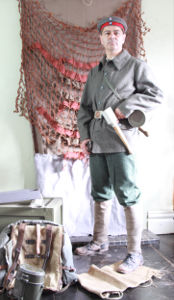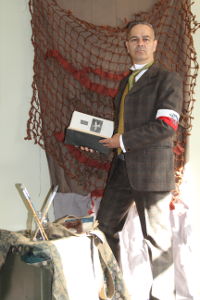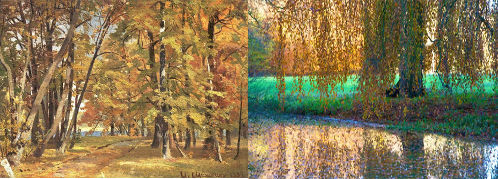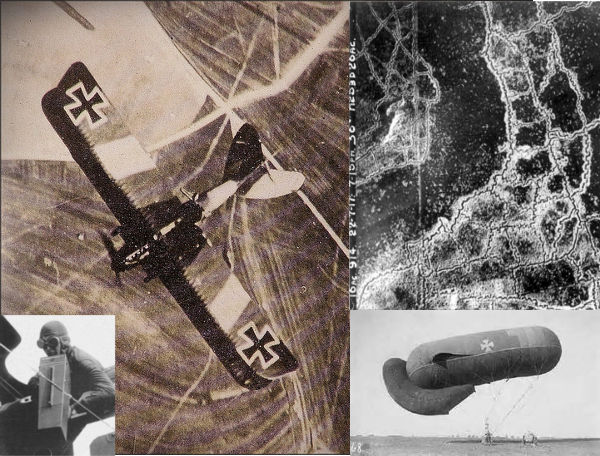World War One - Workshops
'Two stories amongst millions'

Duration - from 90 minute tasters to full day and extended projects.
Audience age range - Primary and Secondary Schools.
Fee £200 per day(plus materials)
Delivered by - Stephen Whitehead
The workshops delivered by 'Stephan Weisskopf' in the '20 years in our village' day of interactives includes writing as:-
- Self censoring soldier and/or parent/sweetheart/sibling (at home).
- Personal diary to record uncensored thoughts.
- War time new reporting.
- Post war political campaigning.
These are designed to deliver a deeper and broader response to the inter-school 4Mat literacy emphasis.
The mobile museum will also provide added source material as it contains periodicals, postcards and letters.
As well as imparting a significant amount of Historical detail, (both major events and fascinating detail), workshops are designed to engage participants emotionally, creatively and to prompt discussion.
All workshop ideas can be tailored to give particular emphasis to design and technology, maths, art, literacy, geography, planning, research, team-work, citizenship, experimentation and testing.
Workshop content.
All work is tailored to your needs; the information below is a typical one day scenario for each of the characters.
 A day with the soldier (Gemeine S. Weisskopft), will take the participants through the 4 years of war, (years 3-6) or 20 years in our village 1913 to 1933, (year 7+). Participants will develop their own character that will then experience the events in a series of tasks that will teach them about events and details of the period. As a group they will make up a small village and this story will develop over the day.
A day with the soldier (Gemeine S. Weisskopft), will take the participants through the 4 years of war, (years 3-6) or 20 years in our village 1913 to 1933, (year 7+). Participants will develop their own character that will then experience the events in a series of tasks that will teach them about events and details of the period. As a group they will make up a small village and this story will develop over the day.
- Recruitment
- Individuals are persuaded or otherwise by a series of appeals to their sense of patriotism, family pride, friendships, shame, and eventually conscription demand. After they have all made their choice, the soldier discloses his and consequently, their nationality for the purposes of the workshop. (Workshops can include discussion of issues involved.)
- Training
- New recruits are taken through a trench system to discover 6 major dangers of modern warfare.
- Life in the Trenches
- Personal kit and other artifacts laid out and some handled by the group to understand the day to day life of any soldier. These and additional items make up a 'museum' of objects that can inspire further research. Items include letters, postcards, magazines, money, food, medals etc.
- Letters Home
- Postcards, diaries and propaganda as differing writing styles and content.
- The Casualties of War
- Dead and injured are called out of group as a personalized experience of the statistics of the war.
- The Aftermath
- Resentment, revolt, economic depression, political extremism. (Participants write, discuss and role play the events affecting their community in the immediate years after the war.)
Special note for World War One Workshop that involves recruitment and role play at fighting front.
It is important not to divulge the nationality of the soldier to participants prior to the intervention as it is designed around philosophical/moral questions of identity, loyalty, nationalism/patriotism and personal responsibility, that are questioned by the unexpected disclosures throughout.
For older students the role play can be extended from 1913 to 1933 showing the impact on a community of conflict. More generally it can be used as an historical example of the breakdown of tollerance on all levels.
Ref. PSHE, Diversity, Radicalization.
World War One Mobile Museum.
All World War One workshops can also include some or all of the mobile museum, which includes:- (n.b. most items are original, but includes some models and reproductions where appropriate.)
- Typical uniform for a front line infantryman.
- Rucksack full of kit and personal items.
- Wallet with money, postcards, and letters
- medals and buttons from many countries.
- Magazines.
- Helmets from main combatant countries.
Other art based workshop ideas
- 'Picture boxes'/dioramas
- Create small scenes of everyday life and major events as a diorama. Workshop to include research into possible scenes, the historical content and technical help with construction. The finished items can be made as a paper 'concertina' construction or placed in rigid cardboard boxes for display. Scenes viewed through appropriate aperture, e.g. periscope, key hole, window, eye glass etc.
- 'Trench Art'
- Crafting a commemorative object in the style of items made from discarded materials by soldiers. Items made in fabric, wood and card to represent beaten metal, carved wood and mixed material items.
N.B. CAMOUFLAGE CENTENERY 2015
(CAMOUFLAGE AS A HUMAN TECHNOLOGY WAS INVENTED BY PARISIAN ARTISTS IN 1915.)
A day with the Camoufleur
Monsieur Stephan Teteblanche (working in the 'Section de Camoufleur')
 Describes how artists invented the human technology of camouflage in 1915 using the latest art movement ideas, and employed it to hide and deceive; to save lives. (Screens, decoys, aerial reconnaissance, 'razzle dazzle', hidden roads and fake trees.)
Describes how artists invented the human technology of camouflage in 1915 using the latest art movement ideas, and employed it to hide and deceive; to save lives. (Screens, decoys, aerial reconnaissance, 'razzle dazzle', hidden roads and fake trees.)
A day of designing, tests and model making. Workshops can be developed for indoor or outdoor activities.
- History
- The application of camouflage to gain advantage in a war of long distance bombardment, aerial attack and new observation technologies.
- Art History
- Impressionism/pointillism and cubism. How the techniques work to unify an object with its background.
- Natural History
- The principles of hiding
- Visual Perception
- Gestalt theory (older years only). Why camouflage works in confusing our brain.
- Art and Design
- Develop and produce an original camouflage. This can be done for use with models of hiding a large object or person indoors or outdoors.
- Maths and Scientific Testing
- Razzle Dazzle ships tested alongside standard ship. (Razzle Dazzle is a separate camouflage type and is an alternative to other workshops.)

In Depth Investigations of Camouflage Techniques
- Razzle Dazzle
 Workshops to create and test 'Razzle Dazzle' (movement camouflage), using model ships and periscopes. Children will first design and paint and scheme and then experience the difficulty of interpreting the ship and its movement by observing the ships through a periscope while others move the scenery and ships.
Workshops to create and test 'Razzle Dazzle' (movement camouflage), using model ships and periscopes. Children will first design and paint and scheme and then experience the difficulty of interpreting the ship and its movement by observing the ships through a periscope while others move the scenery and ships.- Disruptive Camouflages
 Based on the contemporary art movements of Pointillism and Cubism, participants will experience the process of using art as a different way of seeing and 'tricks of the eye' to blend, distort and confuse the reality of objects. Examples and practicals on colour, outline, form and shadow.
Based on the contemporary art movements of Pointillism and Cubism, participants will experience the process of using art as a different way of seeing and 'tricks of the eye' to blend, distort and confuse the reality of objects. Examples and practicals on colour, outline, form and shadow.- Reconnaissance and Deception - decoys and fake landmarks
 2D and 3D experimentation including model making, photography, painting and drawing. (The scale of the work is very flexible and can be tailored to your needs.)
2D and 3D experimentation including model making, photography, painting and drawing. (The scale of the work is very flexible and can be tailored to your needs.)

- Removing a shattered tree with a facsimile, to be used as an observation post (based on real life examples).
 Workshop references examples and challenges participants to plan and design their own solution. This work can include outdoor construction or remain classroom based with model making in clay.
Workshop references examples and challenges participants to plan and design their own solution. This work can include outdoor construction or remain classroom based with model making in clay.